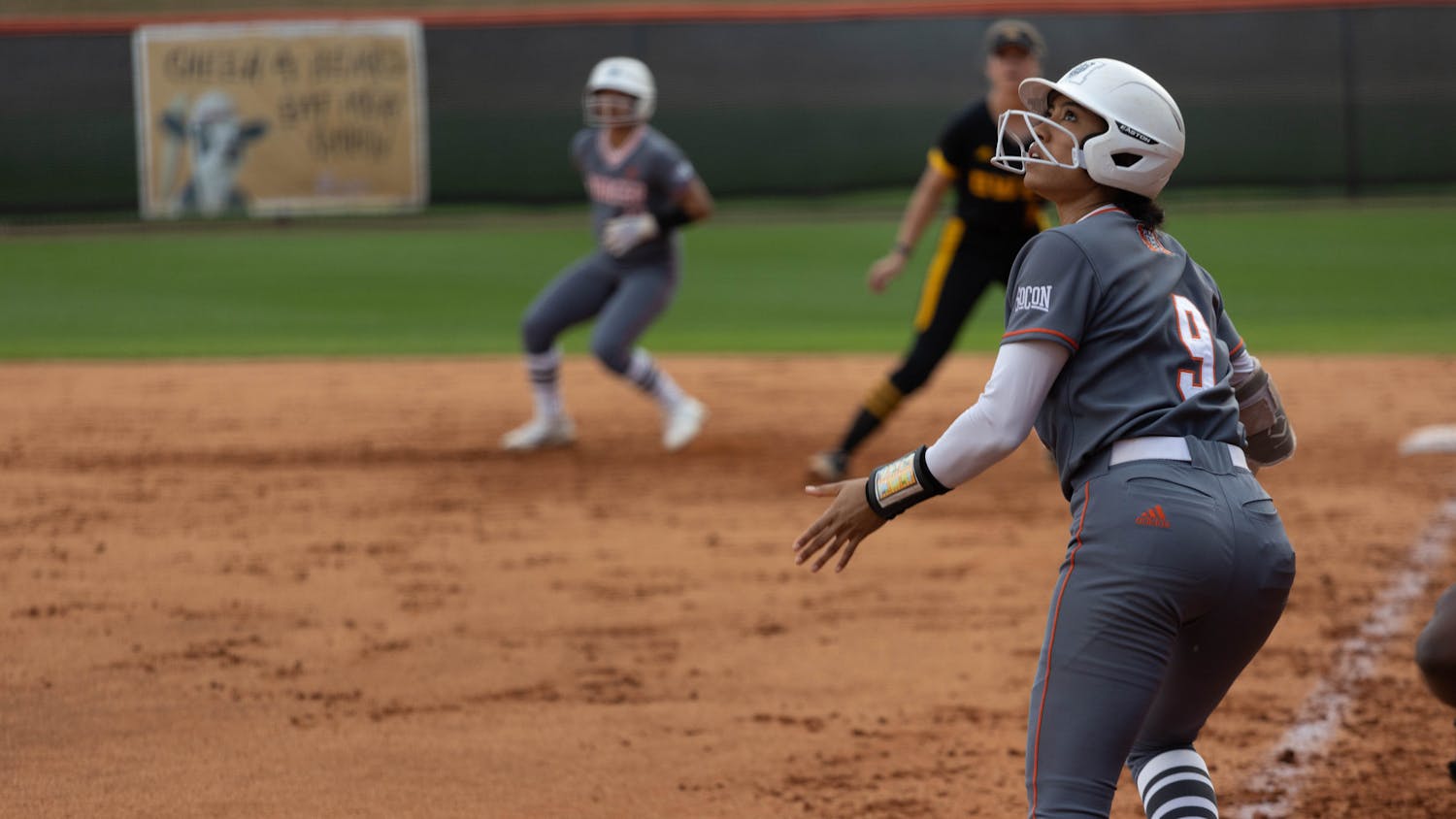Vice President Kamala Harris was “voted” into office in a mock-presidential election hosted by Mercer’s Student Government Association, the Mercer Votes organization and the university’s political science department last week.
The election, which was held over the course of about two days, ended with 66.9% of votes going to Harris, and former President Donald Trump earning 29.6% of the electorate. The total number of votes cast was 429, or about 13% of the student population.
The results come at a time in the race when the two candidates are making their final stump speeches and press conferences in the swing states that will likely decide the election. Just this past Monday, Trump delivered a speech on Georgia Tech’s campus in Atlanta, and former first lady Michelle Obama spoke on behalf of Harris in Atlanta on Tuesday.
More than a third of those who voted for Harris, who is running in her second presidential election and first as the Democratic party’s nominee, listed their belief that she was the “most qualified candidate” in the race. Fifty-nine percent of all voters listed the qualification of their preferred candidate and distrust of the other candidate as the main attractive forces.
Benjamin Hoyt, assistant professor of political science, said that there has been a “steep rise in what we call negative partisanship and affective polarization” in the country within the last two decades.
Negative partisanship, Hoyt explained, is the idea that a voter casts a ballot not because they want to see their candidate in office, but because they are scared to see their candidate’s opposition in office instead. Further, he said, affective polarization suggests that voters, while they may agree on policy measures, do not believe “that people that are a part of the other political party are trustworthy, are honest.”
A similar proportion of Trump’s voters indicated his economic plan as the primary reason that he won their vote.
Of the share of voters who said they would vote for Harris, 10% said that they would not vote on Nov. 5. Of those 29 voters, 18 listed “Other” as their reason for not voting. Nearly 20% of those 29 voters said that they are not eligible to vote in the Federal election.
According to Dean of Students Doug Pearson, this data may have been skewed by the phrasing of the question, which asked whether students would vote on Nov. 5, as opposed to whether they would vote in the election at all.
Trump had a slightly tighter grip on his constituents, but only by a hair. Seven percent of voters who said they would support the former president indicated that they would not vote for him on Nov. 5, most of whom listed “Other” as their reason for abstaining. Three said that they were not registered to vote, a deadline which passed on Oct. 7 this year.
Overall, this proportion of voters who indicated that they would vote on November 5 is much higher than the national average for young voters.
“In 2020 and 2022, young people turned out in a really unprecedented rate. It is really one of the stories of 2020 and 2022 that youth turnout shifted the balance of those elections,” Hoyt said. “There’s some evidence that people who came of political maturity right now, or getting to voting age or became voting age under President Trump’s time in office have much higher levels of political literacy than past generations of voters.”
Among Harris’ voters, the most common political ideology, indicated using a number from 1-10, with one being strongly conservative and a 10 being strongly liberal, was a seven. This was about 23% of her share of voters. For Trump’s supporters, the most common numerical political ideology was a four, making up about 26% of his constituents.
The vast majority - almost 60% - of students who took part in the mock-election are in the College of Liberal Arts and Sciences. Among those students, Harris won 74% of votes to Trump’s 23%. CLAS is the largest school on campus, which explains why it had the greatest representation of voters.
The Stetson-Hatcher School of Business was the only school on campus to vote in favor of Trump. More than 58% of students in the School of Business said that they would vote for Trump. For months, polls have indicated that the economy is one of the top concerns for voters, although there are mixed messages about whose proposed economic agenda would be most harmful or helpful to the country.
While the Tift College of Education had just 12 representatives in the mock-election, the college itself has a smaller class size than the larger CLAS or the School of Business. Classrooms have come under the microscope in recent years as book bannings in K-12 schools have increased in frequency and as education standards have come under scrutiny by conservative governors, members of Congress and parents.
Margaret Rooyakers, assistant director of service and civic engagement at Mercer, said that when she was a student in the College of Health Professionals, she and her classmates weighed policy proposals from candidates, determining which policies would be most helpful to their fields.
Divided by gender, the two candidates were evenly split by male voters, who made up 40% of the ballots cast. But among female voters, Harris received nearly 80% of their votes while Trump mustered just 17%. The ratio of female to male voters closely mirrored the population of Mercer’s campus, where about 57% of the student body is female.
Gabriel Kopp '26 is majoring in Journalism and Law and Public Policy at Mercer University. He has written for The Cluster since he started at Mercer, and currently works as co-Editor-in-Chief. When he isn't studying, he enjoys going for runs and reading The New York Times or the AJC while sipping coffee.





